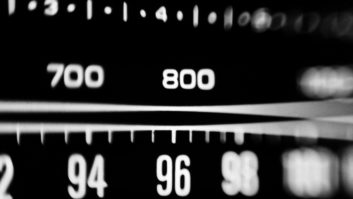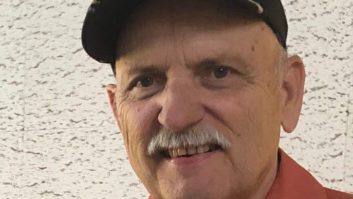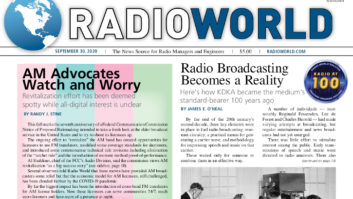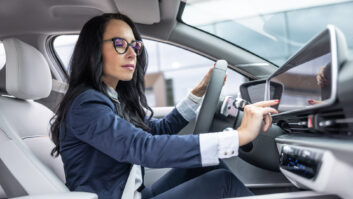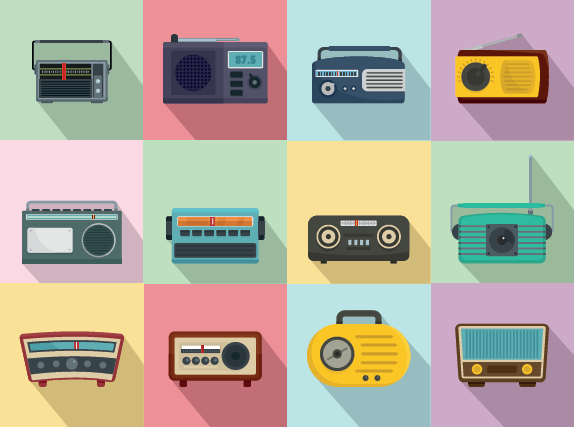
This fall marks the seventh anniversary of a Federal Communication Commission Notice of Proposed Rulemaking intended to take a fresh look at the elder broadcast service in the United States and to try to shore its licensees up.
The ongoing effort to “revitalize” the AM band has created opportunities for licensees to use FM translators, modified some coverage standards for daytimers, and introduced some commonsense technical rule revisions including elimination of the “ratchet rule” and the introduction of moment method proof-of-performance.
Al Shuldiner, chief of the FCC’s Audio Division, told Radio World that the commission views AM revitalization as “a big success story.”
Several observers told Radio World that these moves have provided AM broadcasters some relief but that the economic model for AM licensees, still challenged, has been clouded further by the COVID-19 pandemic.
By far the biggest impact has been the introduction of cross-band FM translators of AM license holders. Now those licensees can serve communities 24/7, reach more listeners and have more of a presence at night.
But critics say that handing out more FM signals isn’t doing anything to help the actual AM band.
“It’s in the oven”
According to the FCC’s latest tally there are 4,570 AM stations licensed in the United States. Approximately 2,800 of them rebroadcast on one or more FM translators.
The number of AMs on the air with hybrid digital HD Radio is unclear; over the years about 250 told the FCC that they were using the format, but many turned it off later, and the commission doesn’t track who remains on the air with it.
According to the commission, fewer than 250 are authorized to operate in the HD Radio hybrid mode, which combines digital and analog transmission; and it’s unclear how many of those actually are airing AM HD Radio.
Commission Chairman Ajit Pai has advocated for AM broadcasters for years. However the commission has yet to take action on additional proposals such as allowing all-digital AM or reducing nighttime signal protection for 50 kW Class A AM stations. There is no open comment period at present.
[Update: Chairman Pai announced on Oct. 5 that the commission will vote on the all-digital option later this month; read that story here.]
Ben Downs, vice president and general manager of Bryan Broadcasting, is an active interested observer. He says AM revitalization hasn’t exactly stalled but that the industry is waiting for the next puzzle piece to fall into place. “Just like the Domino’s pizza tracker, I’d say it’s in the oven,” he said.
Bryan Broadcasting petitioned the FCC in 2019 to authorize the MA3 all-digital mode of HD Radio for any AM station that chooses to do so. Advocates such as the National Association of Broadcasters support this idea.
“We have an FCC that is willing to look at the problems AM stations face and work with them to come up with solutions,” said Downs.
Technical questions raised by the FCC in its NPRM about all-digital are complex, Downs said.
“There were issues of calculating operating power in digital versus analog, coverage area, measuring modulation, emission masks, efficiency and impact on adjacent channels. One of all-digital’s benefits is that it occupies much less bandwidth than the current hybrid mode; thus less sideband hash,” Downs said.
Shuldiner at the FCC noted the “strong industry support” for voluntary all-digital on AM.
But the level of radio owner interest in actually switching off analog signals remains uncertain. Existing analog radios would not be able to pick up these new transmissions; and some observers also doubt that major groups would be eager to convert assets to all-digital in the middle of a pandemic.
Goodbye to skywave
Much has been written in Radio World and elsewhere about the experimental effort of WWFD(AM), licensed to Frederick, Md., and owned by Hubbard Radio, which operates in all-digital mode under special temporary authority.
Joel Oxley, senior VP/GM for Hubbard’s Washington, D.C., cluster, said the band cannot survive in its current form.
“I firmly believe AM needs go digital and say goodbye to the skywave. Having stations that are unlistenable when the sun goes down makes no sense. The extra coverage for just a few stations is not justified in this day and age,” Oxley said. “If changes aren’t made quickly to improve distribution there will be no viable business plans for most AMs.”
However, he said, the commission will only support all-digital if the radio industry expresses support for it.
Another station received experimental authority to test all-digital this year. WIOE in Fort Wayne, Ind., broadcast in MA3 for a few days in the spring but it received listener complaints, after which it ran in all-digital mostly at night. It concluded the digital experiment in September; owner Brian Walsh indicated that his listeners weren’t ready for all-digital AM.
Multicast play
John Garziglia, communications law attorney for Womble Bond Dickinson, wonders whether receiver manufacturers will make radios capable of carrying multicast signals for digital AM stations.
“Receiver manufacturers have not shown an inclination to make such receivers available, absent the FCC taking a proactive stance,” he said.
“The question is whether receiver manufacturers have to manufacture such receivers first for the FCC to move its regulatory roadblock to the carriage of multiple AM sub-channels on FM translators, like is now allowed for FM HD and FM translators — or more to the point, if the FCC does not encourage AM all-digital with multiplex sub-channels and carriage on FM translators.”
As we’ve reported, Garziglia’s client Urban One received permission to operate WTLC(AM) in Indianapolis experimentally with all-digital, but the company’s leader told Radio World the test might not happen because the FCC refused Urban One’s request to rebroadcast digital multicasts of the AM test station over two analog FM translators.
“AM radio is at best beyond challenged, and at worst headed towards extinction,” Alfred C. Liggins III said. “Any digital applications that improve coverage and the ability to deliver multiple streams of content are critical to AM’s survival.”
As of mid-September those were the only three stations that had received STAs. As of early October WWFD remains the only all-digital AM on the air.
Tail wags dog
One veteran engineering professional told Radio World he sees “no major U.S. radio companies showing any interest in investing in AM all-digital; and that for many owners, keeping their AM stations on the air now is pretty much just about retaining their FM translator footprint rather than keeping the AM on the air on its own merits.”
The FCC says it has no plans at present for additional windows for FM translator applications exclusively for AM licensees.
Another expert envisions a day when AM broadcasters are able to geo-locate several FM translators around its service area to offer hyper-localized content — “with the FM translators carrying discrete local programming elements and the AM station carrying programming elements that cover the entire area,” this observer said.
(Such ideas for translators have been in the news recently because technology company GeoBroadcast Solutions wants the FCC to allow FM stations to air unique content on synchronized FM boosters, to create very localized “geo-targeting” ability. A group of two dozen owners then told the FCC that if it were to allow that, it should also allow translators to originate content, potentially a much bigger change in the FM landscape. It’s under such a scenario that an AM station could create the geo-targeted cluster described above.)
The unnamed expert, however, added, “There is also a chance the secondary status of cross-band translators could result in an AM station losing its paired FM translator service someday.”
Awaiting true reform
Ben Dawson, consulting engineer at Hatfield & Dawson, doesn’t believe AM revitalization really ever started.
“The real meat of the AM revitalization NPRM was to finally make realistic changes in the basic allocation rules to reflect modern noise and propagation conditions, which are significantly different than those of the 1930s, which the present rules are based upon,” he said.
“And that simply hasn’t happened. When we’ve talked with FCC staff about it, the impression we’ve gotten is that the upper echelons of the commission just don’t think it has much importance.”
Dawson believes the cross-service FM translators allocated to AM licensees have cluttered the FM band. “Translators and low-power FM stations are just being sandwiched in.”
Digital AM in the United States faces an uphill battle, Dawson said, in part because many owners and large groups object to paying licensing fees. (While Xperi has offered AM stations a license for all-digital HD Radio technology in perpetuity without fees, that offer is seen as a kickstarter rather than a long-term policy.)
“The adoption of FM, NTSC, FM stereo, digital TV; none of those had licensing fees,” Dawson continued. “And neither should digital AM. And of course, DRM [Digital Radio Mondiale] doesn’t and is already being employed in some countries.
“But we need to develop the allocation rules for all digital and movement toward that has been very slow.”
Dawson added, “The commission did change the antenna efficiency rules, which was a help, but the proposed changes in daytime groundwave overlap and returning to using only co-channel stations in skywave RSS calculations and going back to 50% rather than 25% exclusion can be considered separately from the Class A station imbroglio.”
The latter refers to contentious proposals to change the Class A “clear channel” rules, an idea that has not advanced.
On that point, veteran attorney David Oxenford of Wilkinson Barker Knauer LLP sees a possible rift among large and small radio broadcasters.
“The issue seems to be a battle between local stations that want more local service full-time at the expense of the clear-channel stations whose signals would receive interference if that local service is granted, and potentially sacrificing some of the service from what are among the few still successful AM stations in major markets,” Oxenford said.
But at the commission, Al Shuldiner cited concerns from the Federal Emergency Management Agency about the possible impact on presidential alerting if Class A protections were altered. “We remain open to working with the industry to find a path forward on these proposals but do not have any immediate plans to change those protection levels.”
Strictly voluntary
On one thing, broadcasters have been clear: They oppose any kind of mandate to go all-digital — for reasons of cost, digital receiver availability and opposition to government mandates in general, and because some AM operations are in fact successful businesses.
iHeartMedia, which owns 245 AM stations, told the FCC earlier this year that it appreciates the commission’s goal of providing stations flexibility to adopt alternative technologies.
“However, it is imperative that all-digital AM service be wholly voluntary for each individual AM station, as each licensee can best determine the value to its listeners of such an all-digital transition based on the degree of digital-receiver penetration in that AM station’s demographic and market, as well as the economic costs of such a conversion.”
Read more of Al Shuldiner’s interview with Radio World.
Comment on this or any story. Email [email protected]. `
